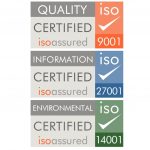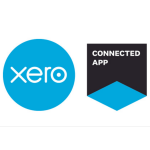Ask a FinTech: How are new technologies helping lenders mitigate risk?
As new technologies continue to shape the financial services sector, consumers are offered more choice than ever when it comes to lending products.
Traditional lenders need to keep up to date as new offerings disrupt the marketplace and customers expect a more personalised experience than ever. Managing risk – as well as responsibility – can be complex as various people’s financial situations are so unique.
This week we ask some FinTech leaders how the latest tech advancements are helping mitigate risks for users in this landscape.
Adam Lieberman, Head of AI and Machine Learning (ML) at Finastra – a company that builds and deploys innovative, next-generation technology for financial services – says that AI and ML are “flipping the script on traditional lending practices and inviting innovation through the door of opportunity”.
As technology advances, companies are looking beyond the conventional credit risk indicators. “Alternative and non-traditional data sources are being analysed to paint an overall picture of an individual to determine their likelihood to default,” says Lieberman. “Advanced statistical and machine learning based models are being employed to draw complex patterns from these data sources as well as provide inherent interpretability to some degree for decisions that are made.”
Innovative technology is allowing consumers to apply for credit even if they were previously not eligible. “Leveraging alternative data and machine learning is allowing lenders to better understand credit worthiness from a larger angle as well as assess the credit invisible, those with no trace of credit history,” says Lieberman.
“As lenders want to serve their communities as well as mitigate risk, more expansive datasets and smarter algorithmic design choices are helping to ensure lending is more widely accessible, and not only available to those with expansive credit histories and higher than average FICO (Fair Isaac Company) scores,” he adds.
Artificial intelligence and machine learning are playing an important role in helping lenders analyse consumer risk profiles in a fresh way, says Lynne Darcey Quigley, Founder and CEO of Know-it, which aims to streamline the credit control process.
“These technologies obviously improve the speed and quality of analysing risks,” she explains. “AI helps try and provide a more rounded decision by using multiple processes as it is not all black and white. By helping improve analytical capabilities in risk management it should predict risk more effectively and ensure people with a more complex financial background get access more to credit readily and safeguard financial institutions from failed payments and fraud.”
With a larger focus being placed on the wellbeing of the customer, lenders can use these technologies to avoid human bias – if done correctly. “By increasing the number of factors included in the decision-making process allows for a fuller and a more accurate picture and hopefully better decisions,” Darcey Quigley adds.
Jack Tenwick from open banking business Yolt Technology Services (YTS) agrees with Darcey Quigley that technology like AI can greatly increase the speed of decision making – which is vital when a customer needs cash in an emergency. “Whereas traditional approaches to credit assessments focus on manually downloading and sending individual bank statements, third party providers are using data enrichment to comb through vast quantities of transactional data and spot patterns,” says Tenwick. “This allows lenders to make more informed affordability assessments, dramatically reducing the time needed to make a decision and thus giving a more improved customer experience.”
A problem with traditional credit scoring mechanisms is that they do not factor in economic conditions when analysing a customer’s lending eligibility – which proves hugely important when the unexpected happens, as we saw in 2020. “The pandemic has really had a huge effect on both lenders, who are dealing with a huge influx of applications, and consumers, who are seeking additional financial support,” says Tenwick.
“With the traditional system, using short term data, many applicants would be quickly rejected based on their last six months of financial history, particularly if they’ve been furloughed, lost their job, or if their business revenue fell during the pandemic. With the need for flexible credit solutions likely to increase, during periods of economic uncertainty, it’s unlikely the traditional credit score mechanism to assess affordability will be fit for purpose going forward.”
It is clear that new technologies are enabling customers to access a range of products they might not otherwise have been offered – while also helping lenders deal with the unexpected and analyse not just whether a customer can pay back a loan, but any other risk factors. This, in turn, is helping provide an opportunity for FinTechs to build trust – and for banks to retain it.
This article was first published by FinTech Alliance.

































